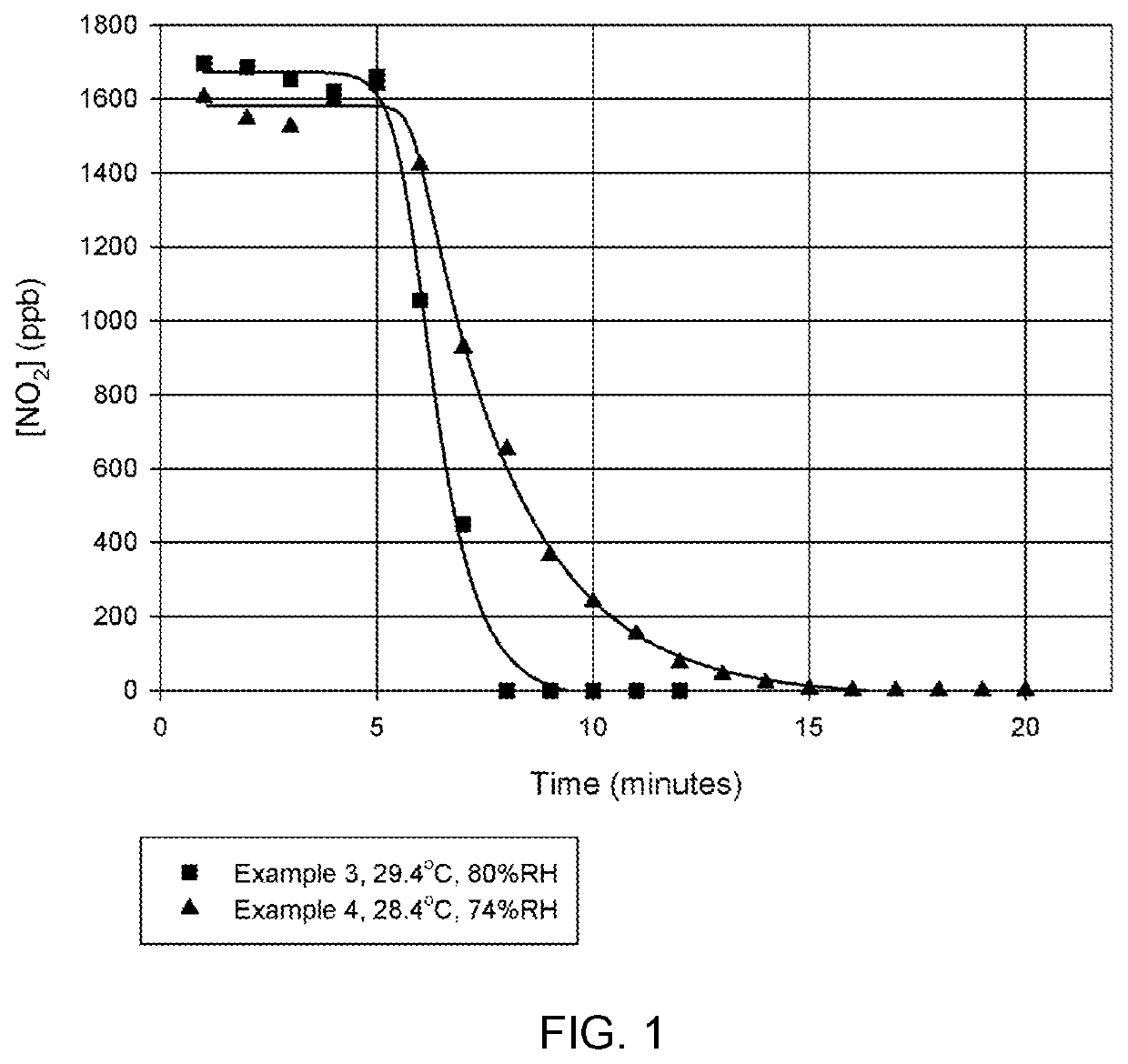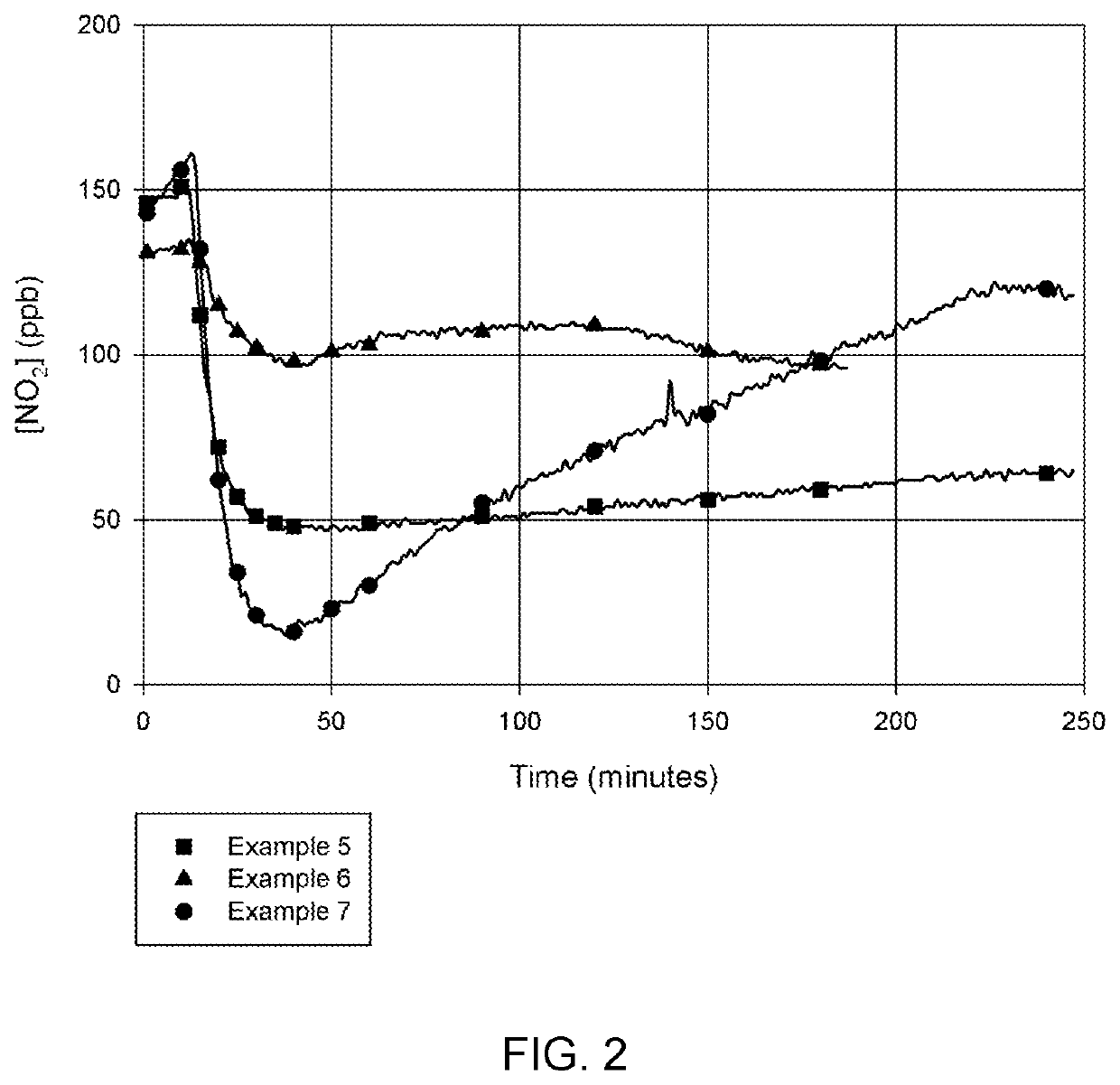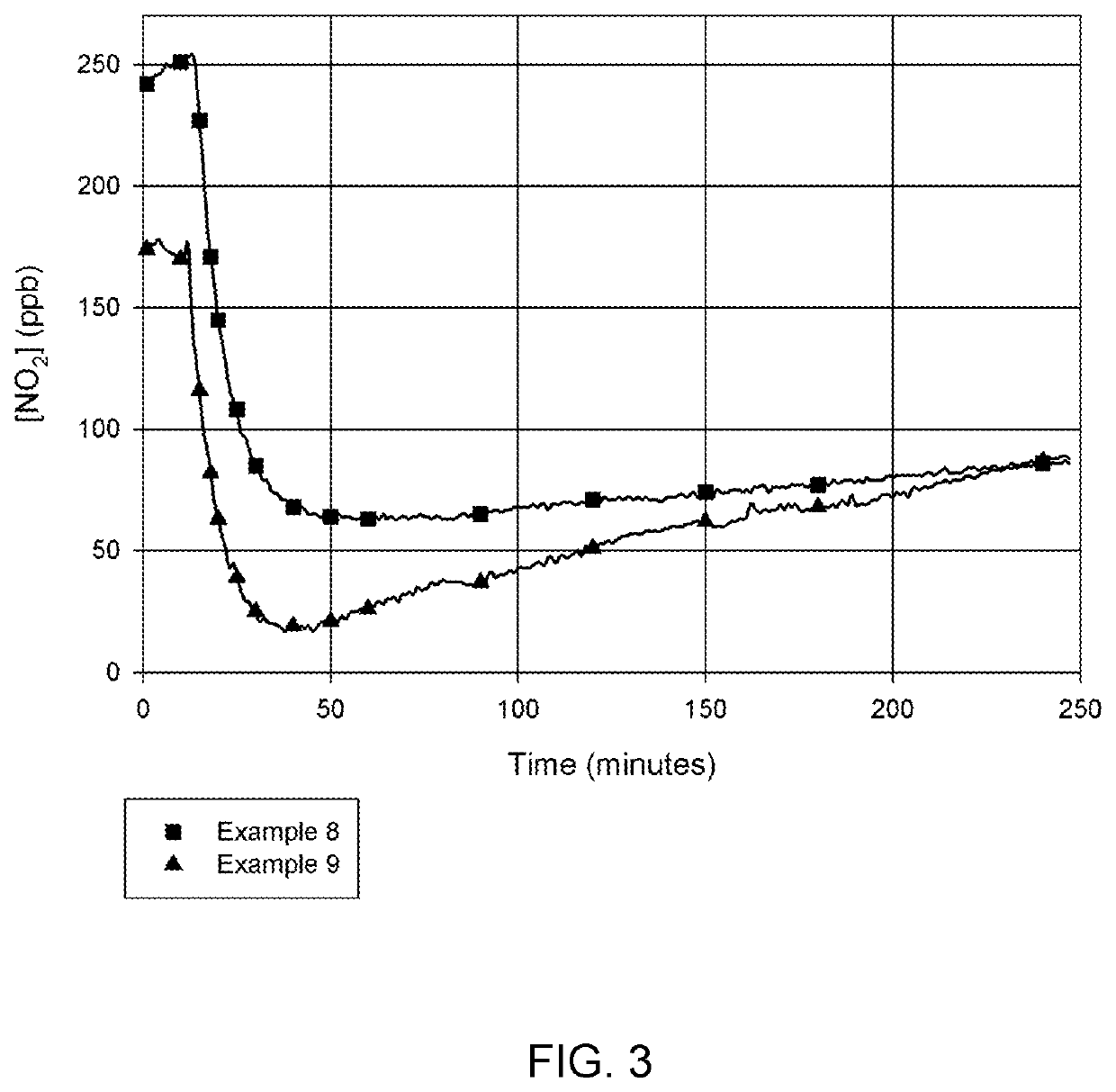Compositions for reducing inhalation of toxic air pollution components
a technology of air pollution and compositions, applied in the field of airborne pollutant inactivating compositions, can solve the problems of triggering or exacerbate asthma and allergy attacks, contributing to several million premature deaths annually worldwide, and air pollution is a major public health hazard, so as to reduce health hazards, enhance the activity of compositions, and reduce hazards
- Summary
- Abstract
- Description
- Claims
- Application Information
AI Technical Summary
Benefits of technology
Problems solved by technology
Method used
Image
Examples
example 1
Preparation of a Composition of the Invention
[0064]A solution containing polyvinylpyrrolidone (1% w / w), TWEEN 20 (0.5% w / w), and polyvinyl alcohol (1% w / w) was dissolved in deionized water with stirring at 80-90° C. Cuprous iodide (1% w / w) and iron phthalocyanine (1% w / w) were added to this solution and stirred until the solution was homogeneous, forming the stock solution. This solution was transferred to a beaker containing one third of volume of the stock solution, which was equilibrated to 50° C. The solution was stirred for subsequent application to fabric.
Treatment of Composition onto Textiles
[0065]Compositions of the invention are prepared with the assistance of heat and mechanical stirring in an aqueous solution of binder polymers and mixing it with cuprous iodide and iron phthalocyanine and optionally a humectant, yielding a combined solution and suspension, depending on aqueous solubility of each constituent.
[0066]The aqueous composition is applied to a textile such as pol...
example 2
Application of a Composition of the Invention onto a Textile
[0067]A swatch of polyester, specifically Terylene (poly(ethylene terephthalate)), was immersed in a stirring slurry solution prepared by methods disclosed in Example 1. The reaction mixture was stirred for 1 minute at 50° C. The swatch was dried with excess solution removed by a roller, and it was further dried at 120° C. for 10 minutes.
[0068]The pollutant-inactivating compositions of the disclosure can be applied to a variety of different textiles or other filter matrices.
[0069]A preferred textile for coating with a composition of the invention is polyester, advantageously non-woven polyester. An objective for selecting textiles for treatment with compositions of the disclosure is to maximize the surface area, which is a function of the diameter and density of fibers, while still maintaining adequate airflow for comfortable breathing, when used as a face mask material. Therefore, the individual fib...
example 3
[0087]In one embodiment comprised of polyester layer coated with a composition of the invention for inactivating oxidizing gases by methods of Examples 1 and 2 with a surface area of 25 cm2, this removed 1661 ppb of nitrogen dioxide within 3 minutes at 80% RH upon exposure in a closed system, with a dynamic flow of gases maintained at 2.5 m / s. The rate of clearance of nitrogen dioxide is illustrated in FIG. 1.
PUM
| Property | Measurement | Unit |
|---|---|---|
| diameters | aaaaa | aaaaa |
| RH | aaaaa | aaaaa |
| temperature | aaaaa | aaaaa |
Abstract
Description
Claims
Application Information
 Login to View More
Login to View More - R&D
- Intellectual Property
- Life Sciences
- Materials
- Tech Scout
- Unparalleled Data Quality
- Higher Quality Content
- 60% Fewer Hallucinations
Browse by: Latest US Patents, China's latest patents, Technical Efficacy Thesaurus, Application Domain, Technology Topic, Popular Technical Reports.
© 2025 PatSnap. All rights reserved.Legal|Privacy policy|Modern Slavery Act Transparency Statement|Sitemap|About US| Contact US: help@patsnap.com



